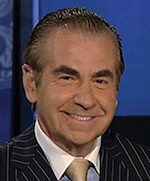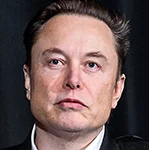 Fraser Seitel Fraser Seitel |
In April, after being named the 10th executive editor in New York Times history, Times veteran Joseph Kahn proclaimed that “in a time of polarization and partisanship,” among his top priorities was “securing the public’s trust in independent journalism.” Sorry, Joe, that train already left the station.
The New York Times, once a bastion of independent neutrality, is today, inarguably, a left-leaning protagonist, pushing a not-so-subtle agenda in its daily news columns to shift the status quo toward a more progressive, egalitarian, anti-business direction. Ironically, more often than not, the world’s most influential newspaper takes dead aim at some of the nation’s most liberal, progressive and socially-just companies.
Consider, for example, the Times’ recent tortuous process to contrive a fictitious trend that American corporate workers are rushing to form labor unions. Here’s how the Times has breathed life into a movement that might charitably be characterized as “tepid” at best.
First, create a dubious “national issue.”
To be clear, we’re not talking about bona fide “national issues” like gun control or abortion or crime, where the Times has a real duty to keep the subject foremost in the national conscience. Rather, we’re referring to the Times inventing an issue that it seeks to jam into the public agenda. Such is the case with the misguided notion that a growing groundswell of corporate employees wants to join labor unions. The facts say they don’t.
Even the most ardent union organizer would agree that time hasn’t been kind to the labor movement. The national unionization rate has drifted down for decades. Today, about 10 percent of working Americans are union members, about half of what it was in 1983. And even though union membership ticked up in the coronavirus-plagued economy of 2020—it has since fallen back—the total number of union members actually dropped by 321,000 individuals.
This declining trend is especially the case in the private sector, where union membership has fallen to six percent, compared with 34 percent among government employees and teachers. To be fair, some public-sector unions have been positive forces. But most private-sector workers have shown little interest in organizing. Now, why do you think that is?
For one, big companies today are more “enlightened.” They pay higher wages, provide more benefits and are often run by executives who not only are more supportive than their predecessors of employees’ social and political views but also largely vote Democrat: think Disney, Apple, Google, Salesforce and countless others.
For another, organized labor—fairly or not—has developed a reputation for being obstructionist, adversarial and greedy. To wit, the response from American Federation of Labor founder Samuel Gompers, when asked what he wanted, famously answered, “More!” U.S. companies in the 21st century—even those run by liberals, especially those run by liberals!—simply don’t trust organized labor to be a force for positive change.
So, the stark reality is that in today’s America, in terms of labor unions, most companies and corporate employees don’t need ’em and don’t want ’em.
Nonetheless, in January 2021, newly-elected Joe Biden vowed to be “the most pro-union president leading the most pro-union administration in American history.” And voila. The New York Times had discovered its next, if highly questionable, “national issue”: resuscitating America’s flagging organized labor movement.
Second, pretend the issue is of “growing national concern.”
As every public relations professional understands, the quickest way to put an issue on the map is to build attention and support by singling out a few easy-to-despise villains. And so, after receiving the incoming president’s call to arms, the Times focused on two of America’s biggest and most profitable enterprises, both created by billionaires and neither of which welcomed labor unions. Starbucks and Amazon became the anti-worker face of private-sector union busters.
Starbucks, with 400,000 employees and 31,000 stores, is one of the world’s most innovative, socially-conscious, employee-friendly companies. Unlike most other firms, Starbucks offers full healthcare, stock options, mental health benefits and myriad other perks to full-time as well as part-time employees.
Starbucks’ record on social justice is second to no other private sector employer:
- It was one of the first retail companies to request customers not to carry firearms, even in “open carry” states.
- It leads the food service industry in environmental changes, from expanding plant-based menu items to shifting to reusable packaging to investing in water conservation and reforestation practices.
- It even attempted a “Race Together” social justice program to encourage in-store conversations about inequality. (It was a disaster!)
- And Starbucks Founder Howard Schultz once ran for president as a liberal Democrat.
Amazon, meanwhile, pays employees an average of $18 an hour—more than twice the federal minimum wage—and spends more than $1 billion in free continuing education and skills training for its workers. Most recently, in anticipation of a Supreme Court reversal of Roe v. Wade, Amazon and Starbucks both announced they would reimburse employee travel costs for elective abortions.
So, you can’t find two more progressive, socially-active corporations than Starbucks or Amazon. That isn’t to say that either is a perfect employer. Their hours are long, the work is hard and the nature of the job isn’t ideal. But neither of these socially-conscious companies deserves to be singled out for mistreating their employees.
But “singled out” they have been by the revered Times. And to carry out its inquisition, the Times assigned former National Republic writer Noam Scheiber to serve as torch-bearer to apply pro-union pressure to Starbucks and Amazon. And for the better part of the last year, Scheiber and assorted colleagues have waged an unrelenting campaign against Starbucks and Amazon in Times news columns to …
Third, declare an imaginary “trend” that’s sweeping the nation.
For the better part of the Biden Administration, the Times has provided Scheiber unlimited space to fan the flames of what it infers is a rising tide of unionization at Starbucks and Amazon.
No story is too small, no election too insignificant for the Times to blast out Scheiber’s reporting of this emerging “national trend.” The Times threw down the gauntlet last December with Scheiber’s groundbreaking scoop headlined, “Starbucks workers at a Buffalo store unionize in a big symbolic win for labor.” The story heralded the historic significance of the first Starbucks store to vote for unionization, calling the decision “an important symbolic victory for labor at a time when workers across the country are expressing frustration with wages and working conditions.”
Curiously, omitted in Scheiber’s description of the momentous event were the number of employees who participated in this historic vote; the final vote to unionize was, in fact, 19-8. The story also downplayed that a simultaneous election at another Buffalo Starbucks ended in a 12-8 vote against unionizing, and an election at a third Buffalo Starbucks ended 15 for unionization, nine against and seven challenged.
The point is that elections at three stores out of tens of thousands—among 78 employees out of 400,000—merited top billing in the world’s most prestigious newspaper. The more significant point was that the results of those three elections were hardly conclusive—one win, one loss, one challenge—and, arguably, neither “symbolic” nor “historic” nor a “trend.”
No matter. The Times and Scheiber were off and running. Over the past six months, the Times featured no less than 12 Scheiber Starbucks union “news” stories—most of them stunningly meager—to keep the issue alive.
What was big news was the Scheiber blockbuster on April 1, headlined, “Amazon Workers on Staten Island Vote to Unionize in Landmark Win for Labor.” Sure enough, a cadre of Amazon employees, unaffiliated with any national labor union, voted to unionize at one of two massive Staten Island warehouses.
Over the next three weeks, The Staten Island Amazon union vote triggered 13 separate follow-up stories in The New York Times, one of which proclaimed triumphantly, “From Amazon to Starbucks, America is Unionizing.”
Well, maybe not so fast. Two weeks later, the Times sheepishly reported, “Amazon Union Loses Vote at Second Staten Island Warehouse.”
In point of fact, despite the best efforts of The New York Times to peddle the myth, there was no burgeoning U.S. labor union revival. Besides the handful of Starbucks stores and the one Amazon warehouse, the sum total of newly organized labor victories was infinitesimal.
Nonetheless, in today’s lemming-like media ecosystem, if the Times says it’s so then so it must be. And following the Times’ unrelenting onslaught of Starbucks and Amazon, media from CNN to NPR to the Chronicle of Philanthropy dutifully paid witness to the rejuvenation of the labor movement in America. Scheiber gleefully added to the mix with a June 8 scoop that 85 Trader Joe’s employees in western Massachusetts had filed for a union election.
And so in the end, The New York Times campaign to forward the fabricated “trend” of labor union momentum sweeping the nation became a self-fulfilling prophecy; leaving in its wake two of the most liberal, progressive and socially-conscious corporations in the land and earning yet another victory for “independent journalism.”
***
Fraser P. Seitel has been a communications consultant, author and teacher for 40 years. He is author of the Pearson text “The Practice of Public Relations,” now in its 14th edition, and co-author of “Rethinking Reputation" and "Idea Wise.” He may be reached directly at [email protected].


 Publicis Groupe CEO Arthur Sadoun puts competition on notice... Macy's throws in the towel as it appoints two directors nominated by its unwanted suitor... The Profile in Wimpery Award goes to the Ford Presidential Foundation for stiffing American hero and former Wyoming Congresswoman Liz Cheney.
Publicis Groupe CEO Arthur Sadoun puts competition on notice... Macy's throws in the towel as it appoints two directors nominated by its unwanted suitor... The Profile in Wimpery Award goes to the Ford Presidential Foundation for stiffing American hero and former Wyoming Congresswoman Liz Cheney. JPMorgan Chase chief Jamie Dimon's "letter to shareholders" is a must-read for PR people and others interested in fixing America and living up to its potential... Get ready for the PPE shortage when the next pandemic hits... Nixing Netanyahu. Gaza carnage turns US opinion against Israel's prime minister.
JPMorgan Chase chief Jamie Dimon's "letter to shareholders" is a must-read for PR people and others interested in fixing America and living up to its potential... Get ready for the PPE shortage when the next pandemic hits... Nixing Netanyahu. Gaza carnage turns US opinion against Israel's prime minister. Trump Media & Technology Group sees Elon Musk's X as an option for those who want the free expression promised by Truth Social but without Donald Trump, owner of 57.3 percent of TMTG... Chalk one up for "anti-woke warrior" governor Greg Abbott as University of Texas lays off 60 DEI-related staffers... Five percent of Americans see the US as its own worst enemy, according to Gallup.
Trump Media & Technology Group sees Elon Musk's X as an option for those who want the free expression promised by Truth Social but without Donald Trump, owner of 57.3 percent of TMTG... Chalk one up for "anti-woke warrior" governor Greg Abbott as University of Texas lays off 60 DEI-related staffers... Five percent of Americans see the US as its own worst enemy, according to Gallup. Nine of the Top 100 firms that participated in O'Dwyer's rankings last year apparently threw in the towel for the 2024 scorecard. Seven other firms also went AWOL.
Nine of the Top 100 firms that participated in O'Dwyer's rankings last year apparently threw in the towel for the 2024 scorecard. Seven other firms also went AWOL. The silence of the White House enables Israel's crackdown on foreign media as it objects to coverage of the carnage in Gaza... Israel plans yet another probe. Promises investigation of its "unintentional" attack on workers delivering food to famine-sticken Gaza... Trump White House media star Hope Hicks to return to spotlight.
The silence of the White House enables Israel's crackdown on foreign media as it objects to coverage of the carnage in Gaza... Israel plans yet another probe. Promises investigation of its "unintentional" attack on workers delivering food to famine-sticken Gaza... Trump White House media star Hope Hicks to return to spotlight.


 Have a comment? Send it to
Have a comment? Send it to 
Jun. 13, 2022, by Joe Honick
Fraser, I'm not as sure the Times worked as hard on that "inferred" or "implied" trend as your long piece seemed to imply. Editorially, it is of course, known to be more of the liberal implication as almost anyone might infer from reading it. I doubt the space given this story has kept either Bezos or Schultz up at night.